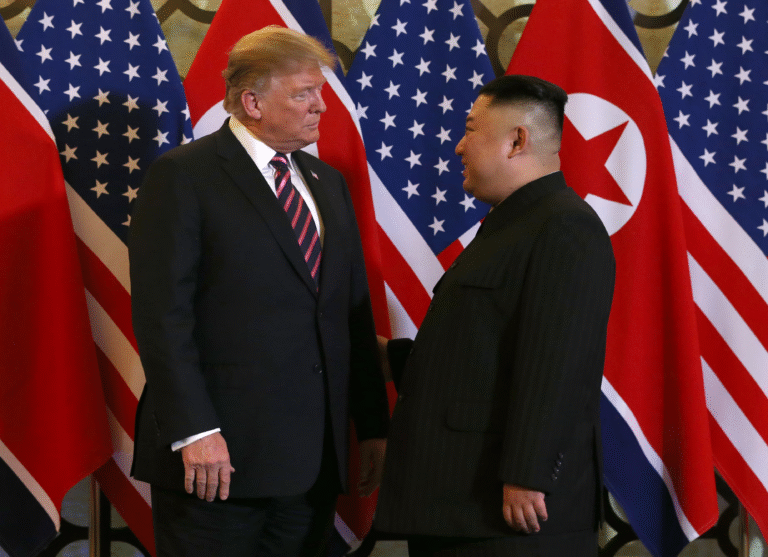
After massive developments in PLA aviation over the past year, it’s time for many observers to update their priors.
“Updating priors” means revising an existing belief system in the face of new evidence. Much has been written of about the modernization of China’s military in recent years, particularly People’s Liberation Army (PLA) aviation (both the PLA Air Force and PLA Naval Air Force). However, the niche trade of tracking PLA news still causes significant lags in disseminating information among the wider defense journalism, think tank, and defense commentariat crowd.
Over the last twelve months – between October 2024 and October 2025 – the breadth, variety, and scale of PLA aviation developments have emerged at a speed that is difficult to contextualize and disseminate. This article will summarize major observed PLA aviation developments in a broadly chronological (but not exhaustive) manner. Consider it a baseline to update your priors on PLA aviation.
Manned Combat Aircraft
October 2024 saw the PLA Navy conduct its first dual carrier exercise and photo-op, consisting of CV-16 Liaoning and CV-17 Shandong and their escorts. The event was even more notable as the exercise displayed – in the characteristically dry and subdued manner of the PLA – multiple 4.5th generation catapult variant J-15T aircraft among the standard ski jump variant J-15s.
The existence of the J-15T (previously dubbed J-15B) was well accepted before this; I have previously documented its development and accurately projected its likely entry into service. However the official acknowledgement that the aircraft type was already in service, after multiple years of minimal imagery, was a relative surprise.
This was followed by Zhuhai Airshow 2024 in November, where more detailed views of the J-15T emerged as the aircraft type made a flying and ground appearance. However, the J-15T was upstaged by the J-35A, a land-based PLA Air Force variant of the J-35, a carrier-borne fifth-generation fighter. A land-based variant of the J-35 had been rumored for a few years, with a handful of grainy photos of prototype airframes. But this marked the first official acknowledgement of the type. Its flight display at the airshow in short order was somewhat unprecedented for new PLA projects, and was indicative of its maturity.
December 2024 brought the now-famous maiden flights of two next generation combat aircraft from the Chengdu and Shenyang Aircraft Corporations, respectively named the J-36 and J-XDS (for now). The PLA has yet to officially acknowledge these aircraft; however, the images are consistent with past aircraft of equivalent project demonstrators or engineering and manufacturing development prototypes.
In the year that followed, a steady drumbeat of flight tests have continued. Most observers, including the U.S. Air Force, describe both aircraft types as next-generation air superiority platforms.
Early 2025 was a period of relative calm for manned PLA combat aircraft, which was then broken by the Pakistan-India conflict. A large-scale aerial skirmish involving over a hundred modern fighter aircraft occurred on the night of May 7. Much about the outcome remains a matter of debate. However it is generally accepted that Pakistani Air Force J-10CE fighters (the same as the J-10C operated by the PLA Air Force) achieved multiple long-range air-to-air kills against Indian Air Force fighters while suffering no equivalent losses of its own. The starkest fact for defense observers was that one or more of these kills were modern French 4.5th-generation Rafale fighters.
The results of this India-Pakistan encounter were subject to tactics and rules-of-engagement both parties held in place, of course. But no one can deny that the Chinese-origin J-10C acquitted itself competently in the largest scale modern air engagement the world had seen in multiple decades.
The months leading to China’s Victory Day Parade on September 3 saw multiple rehearsals by the constituent aerial display. Imagery of rehearsals and the parade day itself allowed observers to confirm multiple new aircraft types and variants in active PLA service (all systems presented at a national level parade are in service, with initial operational tests and evaluations as a minimum requirement).
The J-20A upgraded single seat variant and the J-20S twin seat variant were both officially revealed at this time. While neither aircraft type is powered by the target WS-15 engine, they both hold other major advancements in avionics, materials, power, and thermal management compared to the standard baseline J-20.
The J-35A also flew in the parade, confirming the aircraft’s in-service status. Afterward, credible insiders conveyed that the J-35As were powered by their target WS-19 engines, a technological peer to the WS-15.
The PLA Navy’s carrier-borne J-35, J-15T, and J-15DT aircraft also flew, with the J-35 and J-15DT (the catapult compatible version of the J-15D carrier-borne electronic warfare fighter) marking their official unveilings. A few weeks after the parade, the PLA Navy released footage of their new electromagnetic catapult-equipped carrier, CV-18 Fujian, conducting launch and recovery of the J-35, J-15T and KJ-600, aviation trials that likely occurred months earlier in the year.
Apart from marking important testing milestones for the PLA Navy internally, the event also happens to be the first time that a fifth-generation fighter was launched and recovered by a carrier at sea using an electromagnetic catapult. Such a distinction is not necessarily consequential for imminent warfighting operational capability, but is remarkable from a program management perspective given the PLA Navy’s first ever carrier launch and recovery only occurred 13 years prior with a ski jump.
Unmanned Combat Aircraft
China’s unmanned combat aerial vehicles (UCAVs) saw a parallel drumbeat of emergent projects over this time. Multiple new surveillance and strike UCAVs and unmanned aerial vehicles (UAVs) were displayed at Zhuhai Airshow 2024 by Chinese industry, some of which may enter PLA service and augment their existing modest fleet of similar aircraft.
2025 revealed multiple higher-end UCAV and UAV types, either in or destined for PLA service. In June, commercial satellite imagery of Malan airbase captured a flying wing UAV with a 52-meter wingspan, similar to the B-2 in width. Later, in September, satellite imagery of the same airbase captured a cranked kite flying wing UAV with a 42-meter wingspan, in the same size class as the B-21. Both aircraft displayed gross planforms consistent with signature reduction.
At this stage the 52-meter flying wing is speculated to be a long endurance, stealthy reconnaissance UAV (dubbed WZ-X) similar to the much-rumored RQ-180 in its role, while the 42-meter cranked kite is speculated as a large, stealthy strike-bomber UCAV (dubbed GJ-X). Subsequent ground-based imagery corroborated their existence.
The fact that these airframes were caught by satellite in the open suggest a relatively advanced stage of flight testing, implying a high degree of PLA secrecy in prior years to keep development under wraps. It remains to be seen if the WZ-X and GJ-X will reach PLA service; however the benefits of a strategic stealthy reconnaissance UAV and a strategic bomber-sized stealthy strike UCAV both go without saying.
UCAVs made a high-profile appearance at the September 2025 Victory Day Parade as well. All UCAV and UAV types at the parade were transported upon display trucks, and some were mockup airframes (while some others were said to be real flying airframes), which is consistent with past practice. All hardware and aircraft displayed at national level parades are controlled by an onboard human being, and the missiles, drones, and other weapons alike are not fueled or armed, or are outright mockups. Nevertheless, all platforms must meet the requirement of being in PLA service to participate at the parade.
Thus, the parade confirmed the GJ-21 – a carrier-borne variant of the land based GJ-11 stealthy strike UCAV – is in service with the PLA Navy, although it is not known if it has launched or recovered from the Fujian yet.
Four different loyal wingman UCAVs (also known as CCAs or collaborative combat aircraft) were also displayed, of which two were of a large design approaching the size of a J-10 fighter. The PLA had been known to be developing and testing CCA type aircraft for multiple years, and designs had been shown at past airshows by the Chinese aerospace industry. However, this was the first occasion that various designs were confirmed to be in service, albeit likely in an initial evaluation phase at this time.
Miscellaneous
The past year also saw other, less easily categorized developments. A new, large airborne early warning and control (AEW&C) platform based on the Y-20B strategic transport flew in December 2024. Dubbed the KJ-3000, it signifies continued PLA Air Force commitment to their AEW&C fleet (already one of the largest and most modern in the world).
The Y-20B transport/tanker itself entered robust production for the PLA Air Force as well, enabling the target WS-20 high bypass engine to enter large scale service at last. As a multirole transport/tanker, the Y-20B can be fitted with wing refueling pods and a cargo bay fuel cell to convert to an aerial refueling tanker, akin to the A400M. While a Y-20B tanker is less optimized than a widebody commercial airliner such as the A330 MRTT or KC-46, China currently lacks a domestic widebody airframe. Meanwhile, the Y-20B can still provide credible fuel offload capability, and most importantly can do so at scale without compromising transport and tanker fleet size. Instead, each airframe can operate as a transport or a tanker on an as needed basis.
Two subscale, rotorcraft demonstrators emerged in August 2025: a tiltrotor with fixed engines (similar to the Bell MV-75 or Leonardo NGCTR), and a compound coaxial rotor with push propeller (similar to the Sikorsky SB-1 lineage), from Harbin and Changhe Aircraft Industry Groups, respectively. These manned demonstrators will likely risk reduce and verify new propulsion configurations, and provide a basis for future, larger aircraft to be developed for PLA use.
Interestingly, a privately developed unmanned tiltrotor with fixed engines named the R6000 was showcased at Zhuhai Airshow 2024, of a similar size to the Harbin design. It has yet to fly.
Finally, a folding fin variant of the PL-15/E long-range, beyond-visual-range (BVR) air-to-air missile was displayed at Zhuhai Airshow 2024, intended to enable Chinese fifth-generation aircraft to carry six weapons in their ventral weapons bay (as opposed to the current four). The subsequent high-profile kills of the PL-15E achieved by Pakistani J-10Cs have only elevated its stature.
However, credible rumors in 2025 state that a successor BVR weapon, named the PL-16, is already in PLA service. The PL-16 is said to have a smaller footprint (also enabling carriage of six weapons internally) but significantly greater capability, while using modern production to achieve lower costs than the PL-15. Considering the PL-15 was developed with late 2000s era Chinese technology and production methods, such a prospect is fairly reasonable, and will pose a natural response to the new U.S. AIM-260 JATM.
Perspective and Pondering
This scale of new military aviation developments from a single nation, across just 12 months, is unprecedented for the modern era. Stealthy manned and unmanned platforms, weapons, networking, AEW&C, and electronic warfare: Chinese aviation is running at high throttle in all of these domains. However, there are also areas in relative gestation, such as aeroengines, and especially commercial/civil aviation.
An accurate assessment of PLA aviation is not helped by articles exaggerating Chinese research projects as if they depict imminent game–changing capabilities, or outright misinterpreting the Chinese language. Sober-mindedness is prudent, to ensure real PLA aviation advancements are not cast as ten feet tall.
On the other extreme, among generalist defense commentary, it is not uncommon to see obsolete narratives of PLA combat aviation. That includes outdated assumptions about limited flying hours and poor networking, AEW&C or electronic warfare capabilities; perceptions of new PLA projects as showboating displays; and underestimates of modern fighter fleets and procurement rates. It may come as a surprise that PLA Air Force pilot flight hours are now estimated to match or exceed U.S. Air Force counterparts, and the overall PLA possess the world’s largest modern land based AEW&C fleet, or that annual J-20 production had reached triple digits in recent years.
If one measured PLA aerospace projects at equivalent milestones with U.S., European, Indian, or Russian efforts, it only showcases how secretive the PLA remains. Images revealing new PLA projects are testament to their maturity rather than showing prototypes in an early development stage.
Based on a cursory inspection of fleet size, the PLA Air Force, at time of writing, possess over 400 fifth-generation J-20s and over 400 4.5th-generation J-16s and 250 J-10Cs in service. These are in turn complemented by multiple hundreds of fourth-generation fighters across the J-10A/B and Flanker families, many of which are likely to see upgrades themselves. About 200 dedicated JH-7A fighter bombers remain in service. Obsolete J-8II and J-7 aircraft are an endangered species, with only a handful of units remaining, in process of conversion to 4.5th- or fifth-generation aircraft.
For the PLA Navy, the J-15/T/D/DT family aircraft have been produced well in excess of 100 airframes by now. Low-rate production of the J-35A and J-35 likely began earlier this year, for the Air Force and Navy respectively.
Assuming a moderate fifth-generation production rate of 100 aircraft per year, the PLA is likely to reach 1,000 fifth-generation fighters in 2030, if not earlier, considering J-20 family production alone has exceeded 100 airframes annually and J-35/A production will be added on top. Oddly, the consequences of the PLA’s rapid fifth-generation fleet growth have yet to be flagged by mainstream defense observers.
The continued advancement of PLA land-based AEW&C aircraft (currently numbering nearly 80, all equipped with AESA radars, of which the vast majority were built within the last 10 years), advancement of air launched weapons (for aerial and surface targets alike), growth of standoff and tactical electronic warfare platforms, and potential integration of CCAs and UCAVs already in operational testing, should give pause as to the optimal procurement strategy for potential adversary nations, especially in context of PLA air defenses and multi-domain long-range PLA fires (particularly new aeroballistic, hypersonic glide, and hypersonic cruise missiles).
The maturation of strategic fixed wing aerial assets such as the unmanned WZ-X and GJ-X, and the emergence of the still-expected H-20 strategic bomber platform, will further advance the long-range, long-endurance reach of PLA combat aviation.
If there has ever been a period that should cause one to update prior beliefs about PLA combat aviation, the year from October 2024 to October 2025 would be it.





